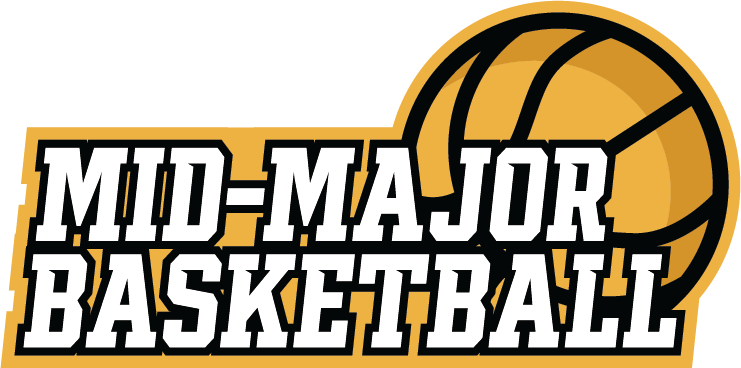Six-foot-6.
Seven-foot-2-inch wingspan.
Nine-inch hands. Eight-foot-10-inch standing reach.
No, this isn’t a breakdown of Kawhi Leonard’s physical profile — though it’s not far off.
These eye-catching measurables belong to former Washington State forward Cedric Coward, and they’ve propelled him up mainstream NBA Draft boards.
Coward’s combine showing turned heads. He posted a 38.5-inch vertical (9th overall) and hit 72 of 103 3-pointers (69.9%) during shooting drills.
Initially labeled a stay-or-go prospect after verbally committing to Duke on May 1, Coward used the pre-draft process to evaluate his stock.
That evaluation paid off.
On Saturday, he officially announced that he’s staying in the draft and forgoing his college eligibility.
He’ll never suit up for the Blue Devils or hear the Cameron Crazies chant his name, but come June 25, there’s a good chance he’ll be a first-round pick.
So, what kind of player will an NBA team be getting?
Due to a torn labrum, Coward played just six games in the 2024–25 season. He didn’t face the same caliber of competition as other top prospects and will be 22 before making his NBA debut.
These concerns are valid and must be considered in his evaluation. Still, his rare physical tools and two-way versatility have made him a compelling figure in draft circles.
Let’s break down what makes him such an intriguing talent, where he still needs development and how he projects at the next level.
Strengths: Three-Level Scoring, Post Play, Off-Ball Defense, Rebounding
Before his injury cut the season short, Coward was one of the most efficient players in the country. He posted a box plus-minus (BPM) of 8.8, a free-throw rate above 50 and a true shooting percentage of 70.
He was one of just 20 players nationwide to exceed 8.0 BPM, a 50-plus free-throw rate and 65-plus true shooting percentage. Coward led this group in free-throw and three-point percentage for players with more than 30 attempts.
While the sample size this season was limited, Coward’s efficiency is backed by multiple years of production. Over his last 38 college games, he shot 38.6% from three on meaningful volume, converting 46.8% of his open looks.
The wing is a quality off-ball scorer — capable of relocating, finding gaps in defensive coverage and confidently pulling from deep. He’s also a clever, deliberate cutter who capitalizes on inattentive defenders.
His efficiency extends inside the arc as well. Since earning playing time at Eastern Washington in 2022, Coward has shot 73.6% at the rim in half-court (112-152) and 58.6% on non-rim twos.
He’s a smooth mid-range shooter with a solid grasp of spacing and timing. His form is compact, consistent and fundamentally sound.
Thanks to his frame, Coward can post up smaller defenders, averaging 1.231 points per post-up in 2023–24 and exploit mismatches. Against larger opponents, he uses his flexibility and soft touch to finish around the basket.
Defensively, Coward adds value primarily as a help defender and rebounder, posting a career defensive rebounding rate of 19.6%. His motor is evident when he fights through screens or defends handoffs.
His Kawhi-esque wingspan is most noticeable when he’s the low man, rotating into help or contesting shots. That length helps him recover when beaten and allows him to stay vertical without fouling.
He ended his college career with a 1.9% steal rate and a 3.7% block rate — comparable to Mavericks forward P.J. Washington. Over six games this season, his block rate jumped to 5.3%, though that number may have normalized with more games.
Improvement Areas: Ball Handling, Creation, Screen Navigation, Playmaking
Coward boasts a well-rounded game, but he’s not without areas for growth.
He hasn’t consistently shown the ability to initiate offense. He lacks burst when driving downhill and struggles to create advantages off the dribble. Improving his handle and live-dribble passing reads will be essential if he hopes to take on any on-ball duties in the NBA.
Coward is a good, not great, athlete who finishes most of his shots below the rim. He had just 26 dunks in 69 games. His lack of explosion could hurt him when he faces more formidable defenses.
His assist-to-turnover ratio (1.18) was underwhelming. However, he did progress this year with a 20.6% assist rate, making more connective reads at Washington State, especially when defenses keyed in on him.
On defense, Coward’s ceiling is higher than his current output suggests. He occasionally loses focus on the ball or over-helps, leading to blown assignments and poor closeouts.
He needs technical refinement when defending ball screens. Although he played in a switch-heavy system, his efforts to fight through screens were often compromised by poor angles and upright posture. He rarely pressured handlers and was more reactive than proactive.
To start his NBA career, Coward projects best as a wing defender. He moves well laterally, but quicker ball-handlers got past him and collapsed the defense. In college, his recovery skills bailed him out — but at the next level, he’ll face faster, stronger and more disciplined competition.
While Coward may not be a finished product, his unique blend of physical tools and proven efficiency provides a strong foundation. With continued development in key areas, the question becomes not if he’ll contribute at the next level, but how much and where he fits best.
Projected Role: 3&D Wing with secondary creation upside
Coward projects as a versatile, plug-and-play 3-and-D wing who can contribute without needing the ball in his hands. His ability to knock down open threes, cut off the ball, rebound and guard multiple positions makes him a strong fit in switch-heavy defensive schemes and free-flowing offenses.
Early in his career, he’ll likely thrive as a rotation piece that provides energy, spacing and smart help defense, especially if paired with playmakers who can create his looks.
If his handle and playmaking develop, he could eventually grow into a more significant role on offense as a secondary creator who runs second-side actions and leans into a post-up game against mismatches.
In his physical profile and projected role on defense, Coward resembles players like Dorian Finney-Smith. However, he isn’t as advanced as a one-on-one stopper yet and will need to gain some weight to achieve that type of defensive versatility.
If everything clicks — and he stays healthy — Coward could be this draft’s Jalen Williams: a late riser with elite efficiency, strong measurables and a skill set that looks even better in NBA spacing. Like Williams, Coward didn’t dominate the national spotlight in college, but the film and tools suggest more to unlock.
If he lands with the right developmental staff, he could quickly outplay his draft slot and have evaluators asking themselves the same question they ask every year: how did we let another one slip?







